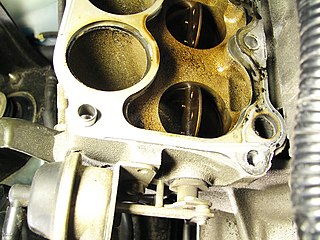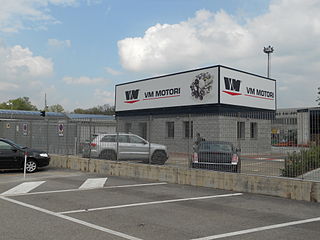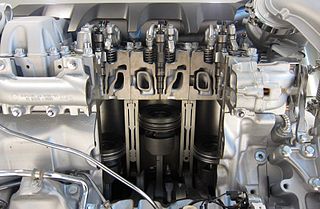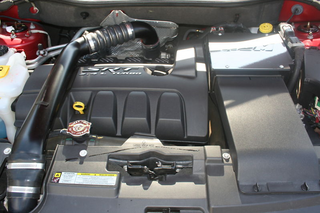| Ingenium | |
|---|---|
 | |
| Overview | |
| Manufacturer | Jaguar Land Rover |
| Production | Jaguar Land Rover Engine Manufacturing Centre, UK 2015 - Present Joint-venture - Chery Jaguar Land Rover, China 2017 - Present |
| Layout | |
| Configuration | Inline-3, Inline-4, Inline-6 |
| Displacement | Inline 3: 1.5 L (1499cc), Inline 4: 2.0 L (1999cc), Inline-6: 3.0L (2997cc) |
| Cylinder bore | 83 mm (3.3 in) |
| Piston stroke | 92.3 mm (3.6 in) |
| Cylinder block material | Aluminium alloy, cast iron liners |
| Cylinder head material | Aluminium alloy, integrated exhaust manifold |
| Valvetrain | 4 valves / cylinder, DOHC, chain-drive, electrohydraulic fully variable intake and exhaust valve lift system |
| Compression ratio | Petrol - 10,5/1 Diesel - 15,5/1 |
| Combustion | |
| Supercharger | 48V electric supercharger (MHEV) |
| Turbocharger | Single twin-scroll turbocharger, or two twin-scroll turbochargers, or single twin-scroll turbocharger with additional 48V electric supercharger (inline-6); ceramic ball bearings |
| Fuel system | Petrol - 200bar solenoid direct injection, centrally-mounted; Diesel - 1,800 bar common rail injection; |
| Fuel type | Petrol, Diesel |
| Oil system | Wet sump, variable flow pump, computer-controlled oil pump |
| Cooling system | Water-cooled, computer-controlled water pump |
| Emissions | |
| Emissions target standard | Euro 6 (b,d); SULEV, MHEV, PHEV |
| Chronology | |
| Predecessor | Ford Duratec / Jaguar AJ126 V6 (Petrol) Ford Duratorq / PSA DW Family (Diesel) |
The Ingenium family is a range of modular engines produced by Jaguar Land Rover, in both petrol and diesel variants. It uses a modular architecture making it possible to be produced in three-, four- and six-cylinder versions (built around individual 500 cc cylinders), depending on demand and requirements. The engines sourced from Ford were replaced by engines from Jaguar Land Rover's new Ingenium engine line from late 2015.
Contents
Ingenium's design is configurable and flexible for longitudinal and transverse architectures and for front, rear, and all-wheel drive, together with auto and manual transmissions. Hybrid variants are set to be released in the future. Both single- and twin-turbo boosting solutions from Mitsubishi and BorgWarner are used. Particular emphasis has been placed on achieving exceptionally low internal friction, which is described as being 17% less than a current 2.2-L diesel. [1] "Other details include roller bearings on cam and balancer shafts instead of machined-in bearing surfaces, computer-controlled variable oil and water pumps, a split circuit cooling system enabling fast warm ups, a simplified cam drive system, crankshafts that are offset from the centre of the block and electronically controlled piston cooling jets to improve efficiency in the oil pumping circuit." [2]
In 2017 Jaguar Land Rover licensed the Multiair/UniAir electrohydraulic variable valve lift system [3] from Schaeffler Group, which Schaeffler in turn licensed from Fiat Chrysler Automobiles in 2001. [4] The system, developed by Fiat Powertrain Technologies, is an hydraulically-actuated variable valve timing (VVT) technology enabling "cylinder by cylinder, stroke by stroke" control of intake air directly via a gasoline engine's inlet valves. [5]
In February 2019, Jaguar Land Rover announced their long-rumoured inline-6 engine. Instead of being a conventional engine, the new 3.0L petrol inline-6 motor combines with a 48 volt electric architecture to enable an electric supercharger, belt-starter generator and extended engine shut offs while coasting and/or while stopped in traffic. The new engine is initially being offered in the Range Rover Sport in two power outputs, 360 PS (265 kW; 355 hp) and 400 PS (294 kW; 395 hp). Both are considered to be mild hybrid electric vehicles. The 48 volt electrical architecture JLR announced with this new engine is similar to Mercedes-Benz's "EQ Boost" and Audi's 48V systems available in 2019.
















